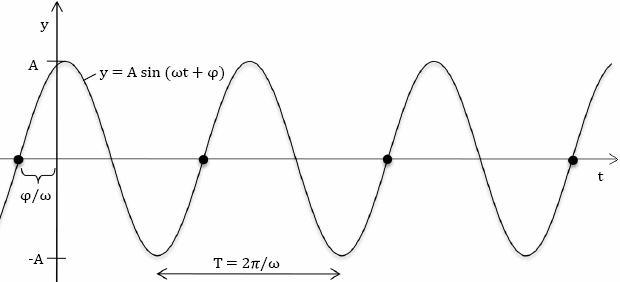I’ve been doing the readings for my Wireless Networking course at UTexas, and in the process have dug into much of the basics of radios and networks that I had ignored in the past. Here, I will try briefly describe what I have learned. Maybe not everything I will say here is exactly correct, but I think it’s at least mostly correct.
Let’s try to start somewhere near the beginning. Our goal is to transfer a
information from one location LocSND to another LocRCV conveniently.
The way we will accomplish that is by having LocSND manipulate the
electromagnetic field around LocRCV. More specifically, we will encode a
binary dataframe as modulations of a radio signal around a pre-determined
carrier frequency.
How do we do that?
We use an LRC circuit to make electrons oscillate in an antenna. These oscillating electrons ram into loose and excitable electrons in the antenna’s metal, this releases a photon at a particular frequency. Globally (i.e. within the entire transmitting antenna), enough photons are being released that it seems to an external observer looking at the produced electromagnetic (EM) field like there is a continuous signal being emitted.
So we’re sending these EM ripples, which are generally at our carrier frequency. However, if we just sent a basic frequency, there would be no information in there, so we have to modulate it. We can modulate its amplitude (A), phase (phi), and frequency (omega), the 3 free parameters of the equation (in the top left of the equation in the following gif from “sengpielaudio”)

This would give us 1. Carrier frequency —– the EM frequency inside which our signal is encoded 2. amplitude shift keying (ASK) — send signal at carrier frequency by modulating the signal’s amplitude 3. frequency shift keying (FSK) — similar but modulates frequency 4. phase shift keying (PSK) — again, but modulates phase
One simple method would be to say our carrier frequency is 5 Hz, but our band is actually [4,6] Hz. So whenever the signal is 4 Hz, that means I’m sending a 0, and if the signal is 6 Hz, it means I’m sending a 1, and a new digit starts every 1 ms. That would be an example of FSK.
A fundamental problem that we must solve is that all senders and receivers of
information via EM fields with their antenna(s) are sharing the a single
medium for transmitting that field (viz. the air, etc.). So if LocSND sends
a message to LocRCV_1, then LocRCV_2 sitting one foot away can hear that
message loud and clear. This leads to three major issues: security,
multiplexing, and interference.
To multiplex means to send multiple distinct signals through a single channel. How are we going to send distinct signals to receivers 1 and 2 in such a way that both can understand the signal meant for them? We can chop up the frequency band that our transmitter can use into 2 smaller bands, and use each of those bands as separate carriers. Then we tune the receivers to pick up frequencies in their respective bands. This is what is called frequency division multiplexing (FDM), but we can also multiplex across space, time, and code.
Of course, I’ve only scratched the very surface of what’s going on here, but that’s all the time I’ve got.